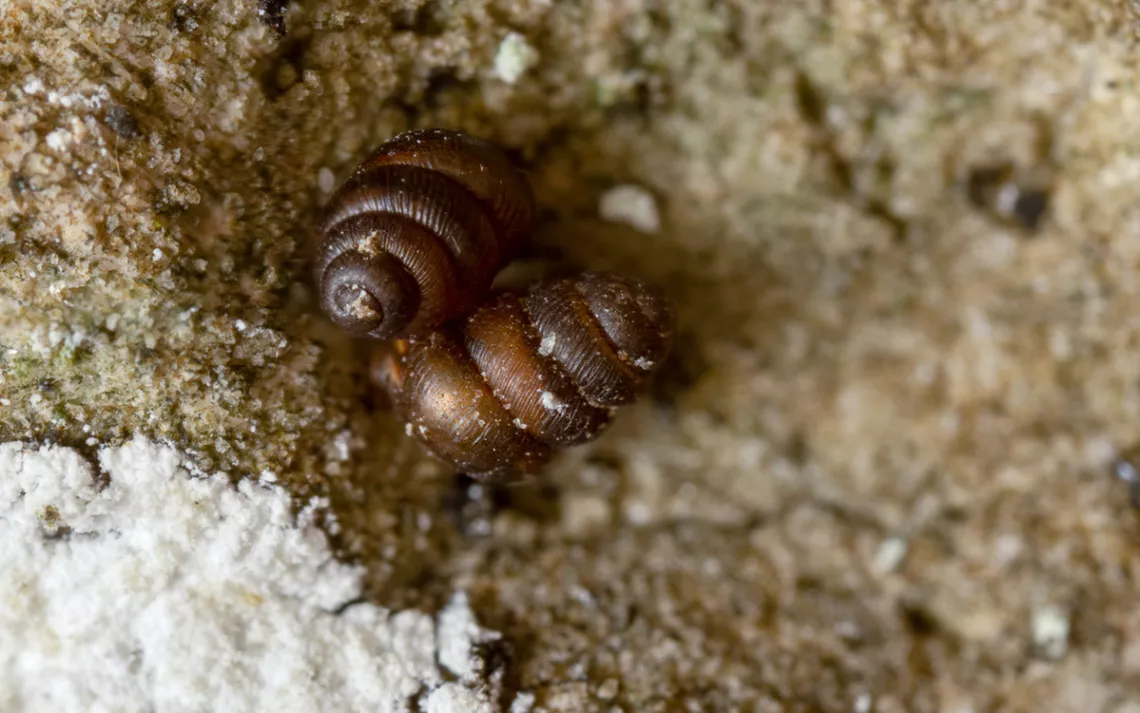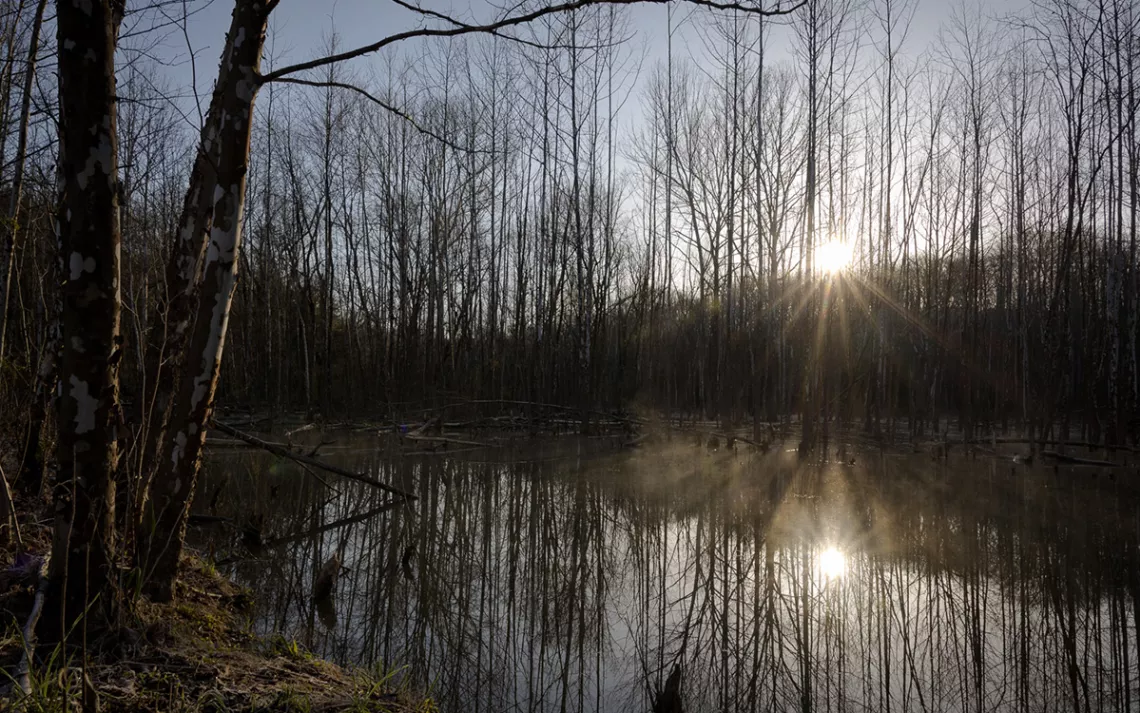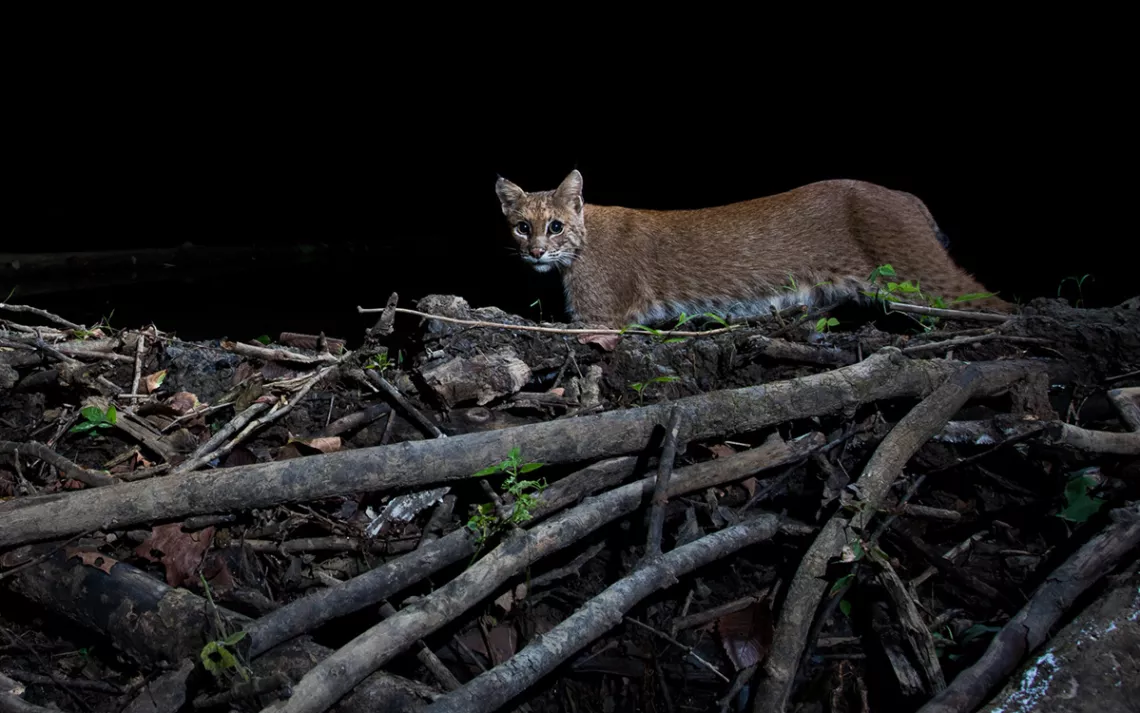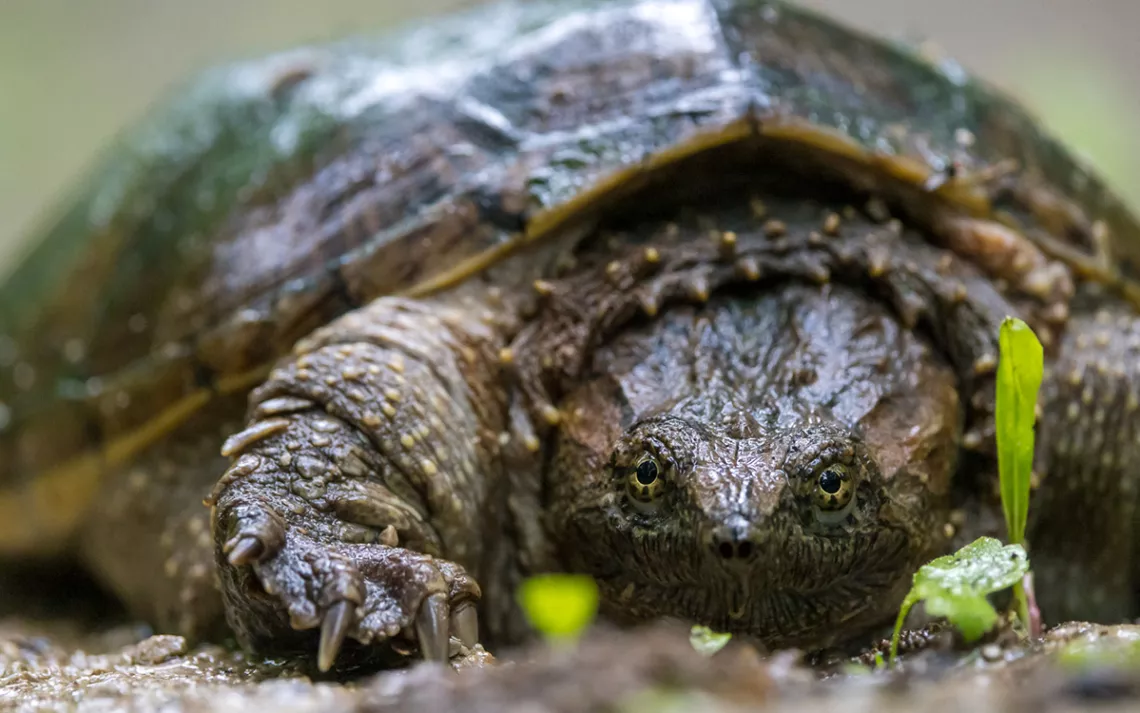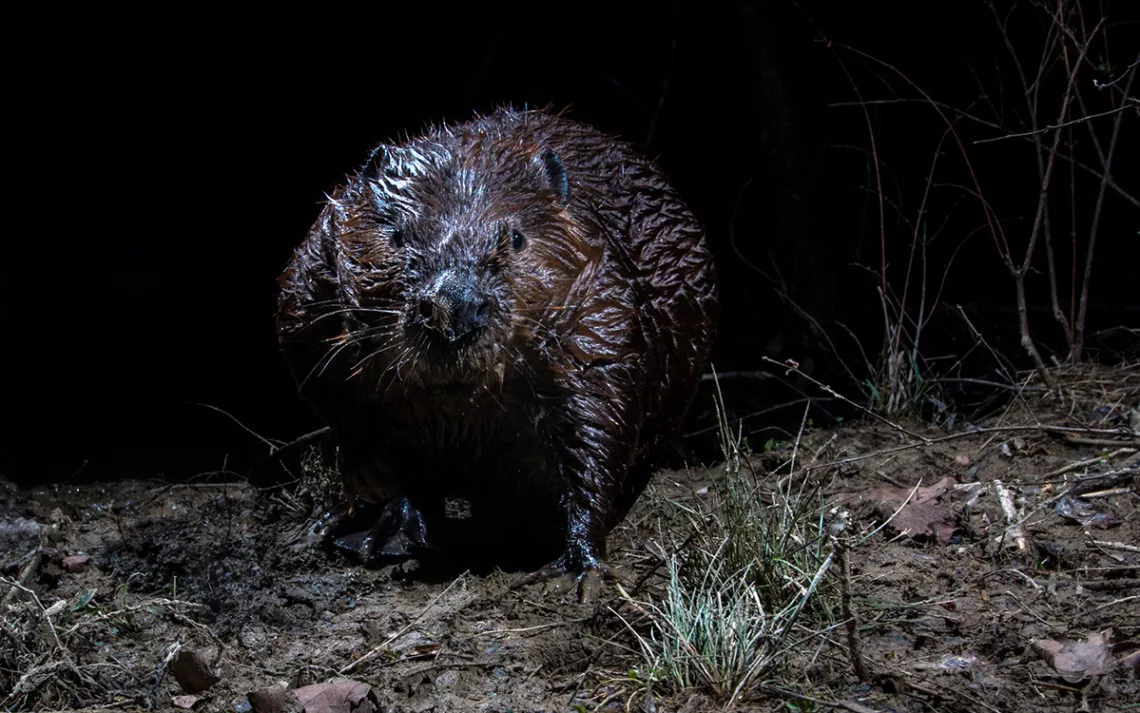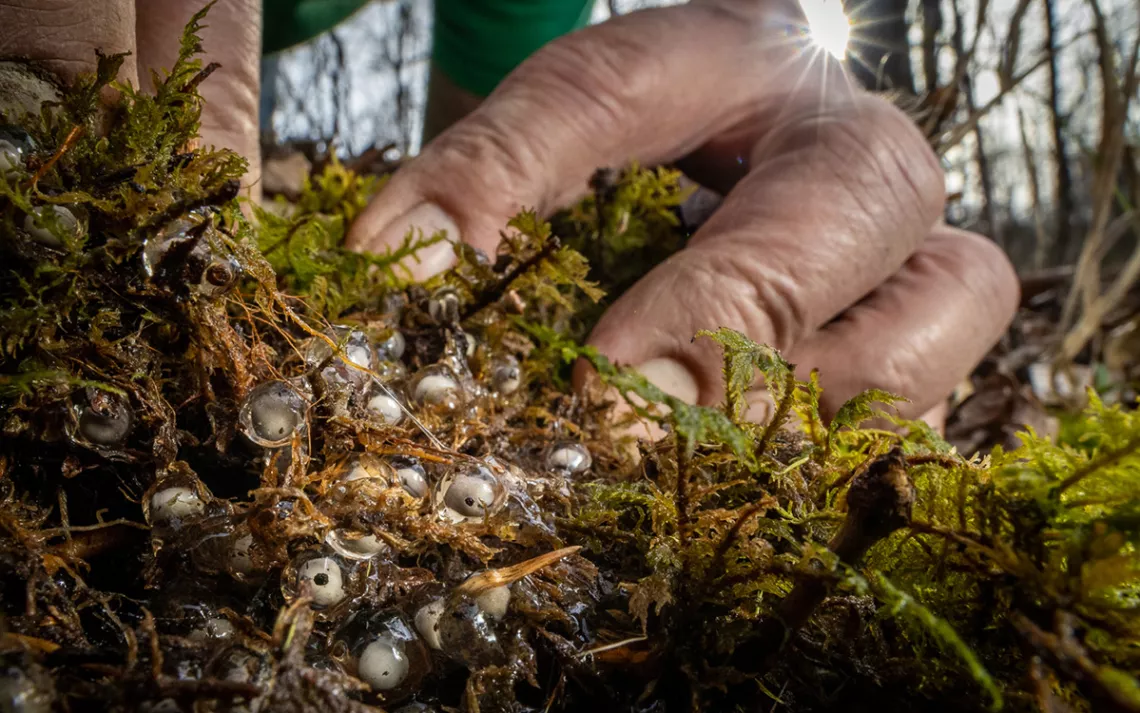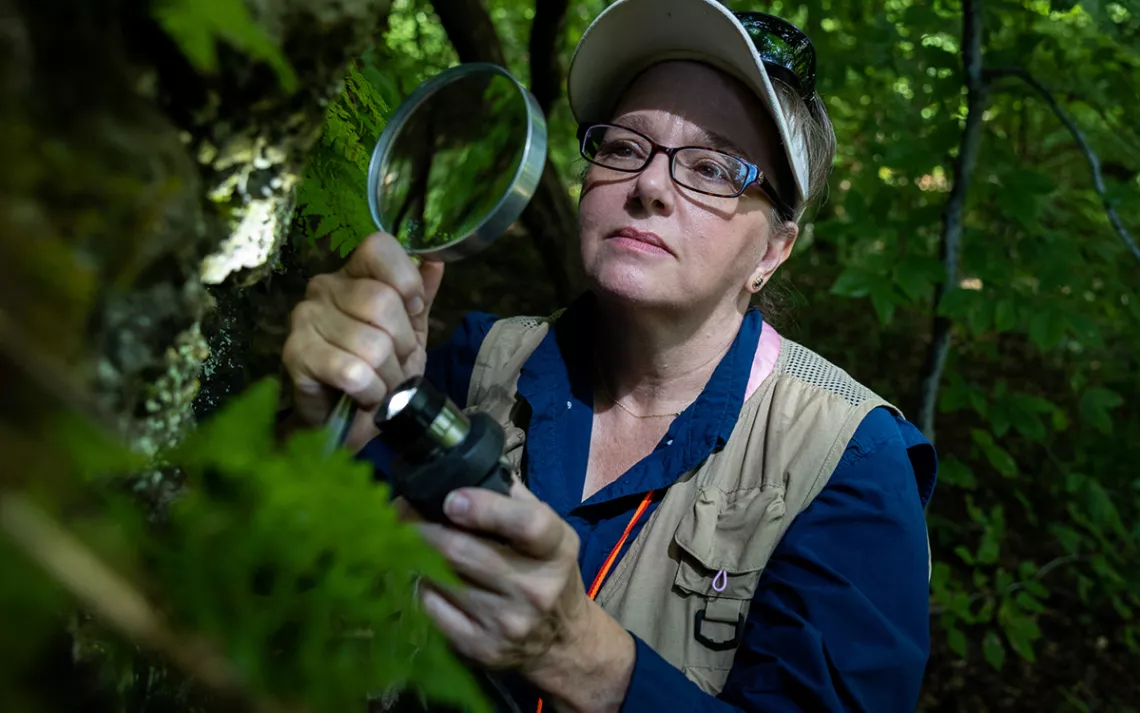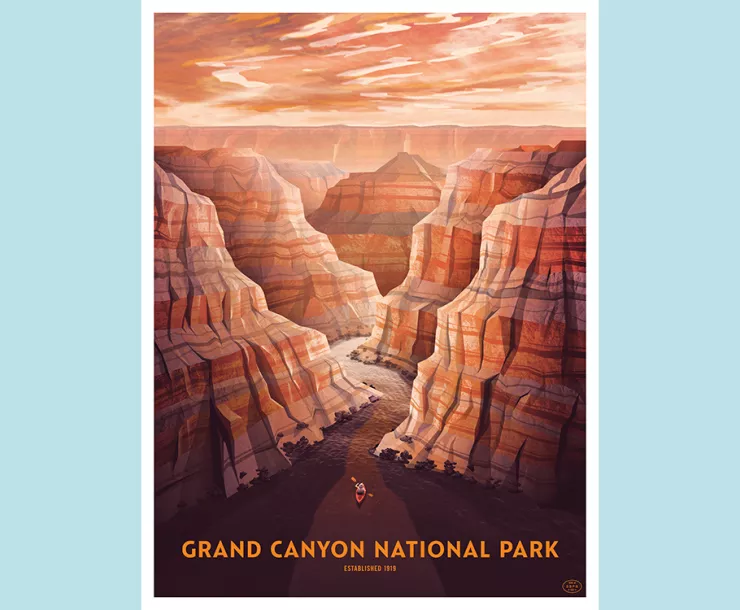Wild Kentucky Under Proposed Pipeline Threat
A photographer explores a private forest fighting big oil and gas
When Carla Rhodes was growing up in greater Louisville, Kentucky, she knew little about the extraordinary biodiversity just outside the city. Now a conservation photographer living in New York’s Catskill Mountains, Rhodes returned to Kentucky in 2022 as the inaugural Environmental Artist in Residence at the 16,140-acre, privately owned Bernheim Forest near Louisville. Over three week-long visits, she used camera traps to capture images of passing animals including a bobcat, beavers, and the first American bittern seen there in decades.
In the forest’s Cedar Grove Wildlife Corridor, she also photographed Kentucky’s unique population of bluff vertigo snails, which measure just two millimeters across. “Coming from Kentucky, my mind was just blown,” Rhodes told Sierra. “My whole aim was to show the beauty of this forest hiding in plain sight.”
That forest is under threat by a proposed natural gas pipeline that would cut across the wildlife corridor, where bluff vertigo snails were found in 2019. The area is also habitat for other vulnerable plants and animals, including federally endangered Indiana bats and northern long-eared bats. In a court case that began January 10, Louisville Gas and Electric (LG&E) and Kentucky Utilities are attempting to push the 12-mile pipeline through using an eminent domain action. Bernheim Forest scientists predict pipeline construction would wipe out the Cedar Grove population of bluff vertigo snails, further reducing their global numbers. They also argue it will pollute local waterways and contribute to hydrocarbon use for decades to come.
“Not only does it disrupt habitat, it’s also unnecessary additional infrastructure,” says Terrell Holder, chair of the Greater Louisville Sierra Club. “We should not add more fossil fuel infrastructure at all from this point forward.” Cedar Grove Wildlife Corridor is in a part of Bernheim Forest that was purchased in 2018 using grant funds from the Kentucky Heritage Land Conservation Fund and the US Fish and Wildlife Service’s Imperiled Bat Conservation Fund, a sale that stipulated a conservation easement and deed restriction. Should LG&E’s eminent domain lawsuit succeed, it would help establish a precedent for seizing land purchased with public money and legally preserved in perpetuity.
“We don’t want to see LG&E make a habit of targeting conservation lands just because they’re a green space on a map or the easiest route across an area,” says Andrew Berry, director of conservation at Bernheim Forest. “We want to see the remaining natural land, forests, and wildlife corridors held to a higher standard.”
Berry says he expects a decision from Bullitt Circuit Court judge Rodney Burress by February or March. “This isn’t the end, by any means, of the pipeline fight,” Berry says. “Conservation is a long process.”
Editor's Note: An earlier version of this story incorrectly stated that bluff vertigo snails have been found in just 30 sites worldwide. While snail researchers now believe that number is much higher, Kentucky's population of bluff vertigo snails, which is genetically unique, has been found only in Bernheim Forest and is under threat from pipeline construction.
 The Magazine of The Sierra Club
The Magazine of The Sierra Club
